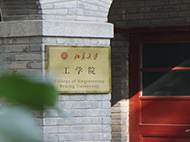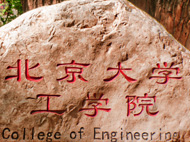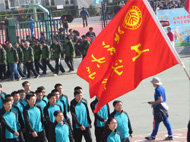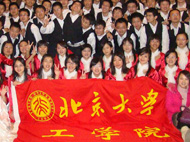美国工程院院士、耶鲁大学教授Abbas Firoozabadi再次来我司授课
选课员工: 高年级本科生和研究生(请将姓名、学号、所在院系发邮件至 zhangshanshan@pku.edu.cn)
时间:2018年7月9日—8月3日每周一三五下午2-5点(不包括考试)
地点:四教302
课程名称:热力学及其在油气资源生产中的应用Thermodynamics and Applications in Hydrocarbon Energy Production
学分Credit:3 credits
授课语言Teaching Language: English
课程描述Course Description:
Thermodynamics shapes the understanding and formulation of diverse groups of problems in energy production, hard materials, soft matter, nanoparticles, climate change, Alzheimer’s disease, stars, black holes, and many others. In thermodynamics, one examines bulk phases and the interface between the bulk phases as well as heterogeneous state in confinement. Molecular structure and aggregation in bulk and at interfaces and effect of functional molecules on properties are also in the domain of thermodynamics.
This course is divided into two parts. The first part covers advance classical thermodynamics. The second part covers statistical thermodynamics and molecular simulations. The link between the three as well as molecular thermodynamics are stressed throughout the course.
In the first part of the course we present unified approach to bulk-phase equilibrium thermodynamics, bulk-phase irreversible thermodynamics, and interfacial thermodynamics in the framework of classical thermodynamics. The effects of curvature, gravity, and electrical charge on equilibrium are covered in multicomponent systems. Concepts of stability, criticality are covered in detail. The choice of the Gibbs free energy function covers applications to a broad range of problems in chemical, environmental, biomedical, and petroleum engineering as well as earth sciences. The grand potential is also introduced to study equilibrium in open systems and in inhomogeneous nanopore domains. A number of concepts and problems related to phase change and interface energy, and nonequilibrium effects are discussed. We will also cover phase split calculations and stability analysis in relation to two-phase and three-phase split caluclations.
In the second part of the course statistical thermodynamics followed by molecular simulations are covered to use key molecular and atomistic aspects to compute bulk properties as well as nanoscale properties including adsorption. Both equilibrium and flow in nanopres are emphasized in the derivations. Molecular dynamics simulations are key focus in the second part of the course. Umbrella sampling and steered molecular dynamics simulations concepts are discussed in relation to attraction to functional molecules to different interfaces.
课程大纲 Major topics and lectures include:
- Major thermodynamics functions in bulk phase thermodynamics and criterion of equilibrium
- General theory of equilibrium. Introduction to free energy change in the formation of micelles emulsions is covered through examples.
- Brief introduction to pressure, volume, and temperature relationship and metastable and unstable concepts
- Stability and Criticality
- Efficient two-phase and three Phase-split Computations.
- Entropy production and irreversibility; Basic derivation of various diffusion processes; Past climate change modeling from irreversible thermodynamics
- Interfacial thermodynamics; nucleation; interfacial phenomena. Line tension concept.
- Statistical thermodynamics; Various ensembles; Basic derivations of temperature and pressure
- Molecular simulations and applications to equilibrium and flow in nanopores; Adsorption modeling will be discussed through examples. Umbrella sampling and steered molecular dynamics simulation in relation to adsorption of functional molecules.
备注Remarks:
Work on some 60 problems is perhaps the most important learning elements of the course. The main goal is to introduce thermodynamic thinking in the course takers and help all students for top performance. Commitment to solving the assigned problems and understanding of the concepts is the main per-requisite. All the problems attempted by the students will be returned to them on a weekly basis.
教材Textbooks:
- Name: Thermodynamics and Applications in Hydrocarbon Energy Production
- Author: Abbas Firoozabadi
- Publication Company: McGraw-Hill
- ISBN:978-0-07-184325-6
- Time of Publication: 2015
- Edition:1st Edition
参考书Reference Books:
Sandler, An introduction to statistical thermodynamics,2011
Notes on statistical and MD simulations
A set of typed handouts on some selected topics will be provided.
教师简介Professor:
- Name:Abbas Firoozabadi
- Colleges and Departments:Chemical and Environmental Engineering
- University: Yale University
先修要求Prerequisites:
Senior or graduate standing and courses on advance calculus and linear algebra










